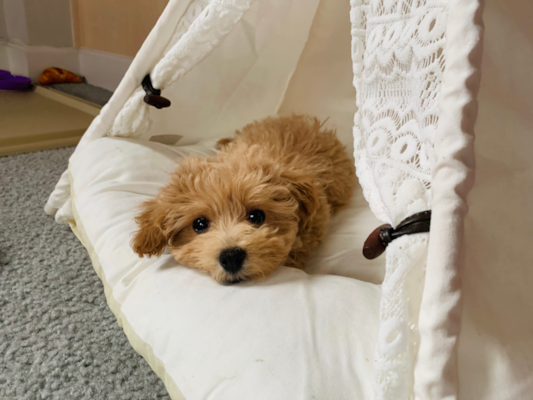
Maltipoos are loved for their adorable looks and friendly personality, but are they hypoallergenic? The short answer is yes. Maltipoos are generally considered a good hypoallergenic dog breed.
However, another important question arises: Are Maltipoos hypoallergenic for everyone? This is a crucial question for potential owners who are unfortunate to suffer from more severe pet-related allergies. Understanding the characteristics that contribute to a dog's hypoallergenic nature, including hair type, breed lineage, and grooming needs, can help determine if a Maltipoo is a suitable pet for people who suffer from mild to severe allergies to dogs.
Table of Contents
What Does Hypoallergenic Mean?
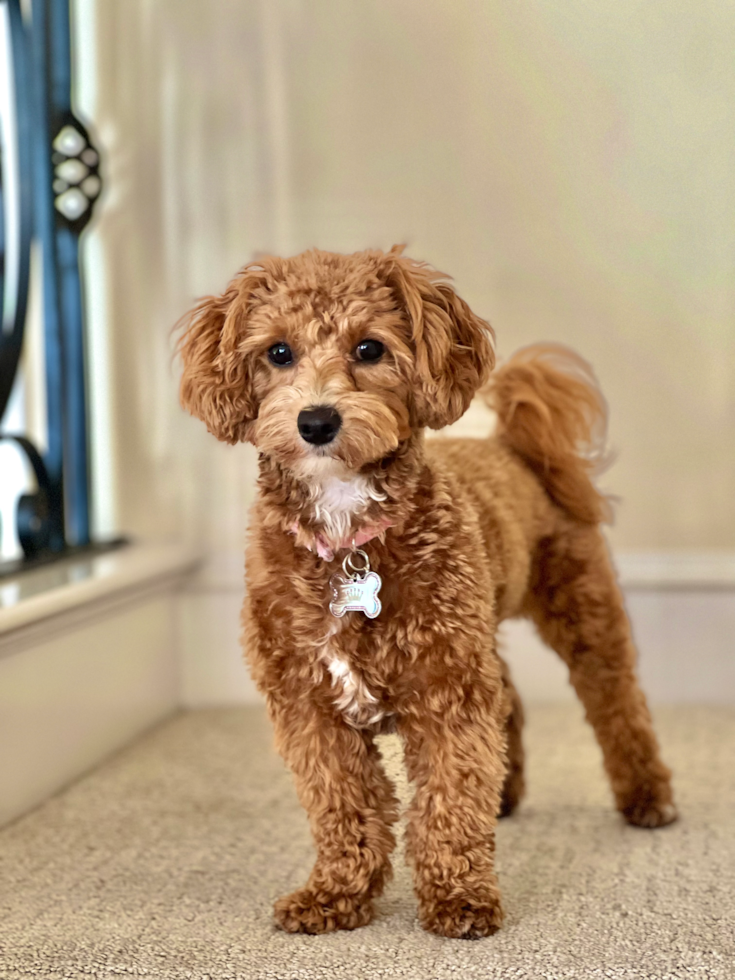
Premier Pups Customer Photo of a curly-haired Maltipoo
The term "hypoallergenic" is often used to describe animals or products that are less likely to trigger allergic reactions. When it comes to dogs, being hypoallergenic means that the dog produces fewer allergens compared to others. It's important to note that no dog is completely allergen-free or in other words, 100% hypoallergenic. Allergens come from a dog's dander (dead skin cells), saliva, and urine, not their hair itself. Hypoallergenic dogs, like Maltipoos, generally have hair that sheds less, thus dispersing fewer allergens into the environment.
Understanding Maltipoos' Hypoallergenic Traits
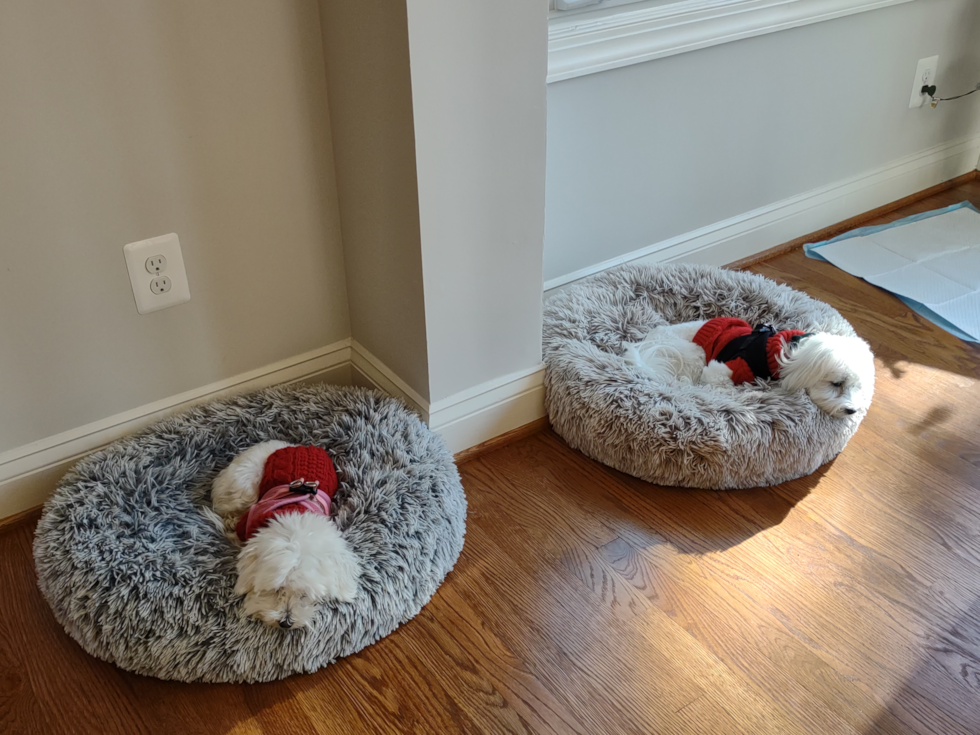
Premier Pups Customer Photo of two beautiful maltese dogs
The Maltipoo is a hybrid breed created by crossing a Maltese with a miniature or toy Poodle. This combination aims to mix the desirable traits of both breeds, including their hypoallergenic qualities. Both Maltese and Poodles are known for their low-shedding coats, which produce fewer allergens. This makes Maltipoos a potentially suitable option for allergy sufferers. The hypoallergenic potential of a Maltipoo largely depends on the specific characteristics inherited from each parent breed, particularly their hair types and genetic lineage.
Parent Breeds: Maltese and Poodle
To understand the hypoallergenic potential of Maltipoos, it's important to look at their parent breeds: the Maltese and the Poodle. Both breeds are known to have low-shedding coats which are less likely to trigger allergies compared to other breeds.
Maltese Characteristics
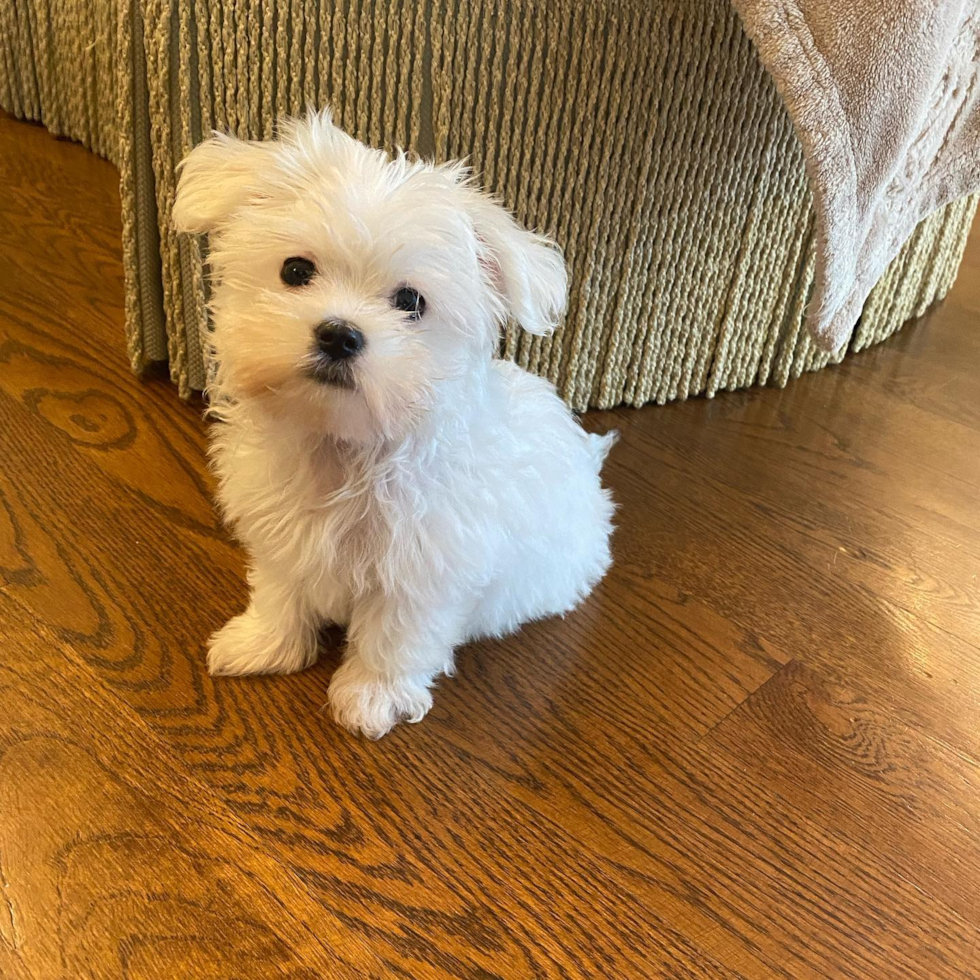
Premier Pups Customer Photo of a sweet-looking maltese
Maltese dogs have a long, silky, single-layer coat that sheds very little. This minimal shedding means they produce fewer allergens, which in turn makes them a popular choice for allergy sufferers. Their fine, hair-like coats require regular grooming to prevent tangles and matting, but it significantly reduces the amount of dander released into the environment.
Poodle Characteristics
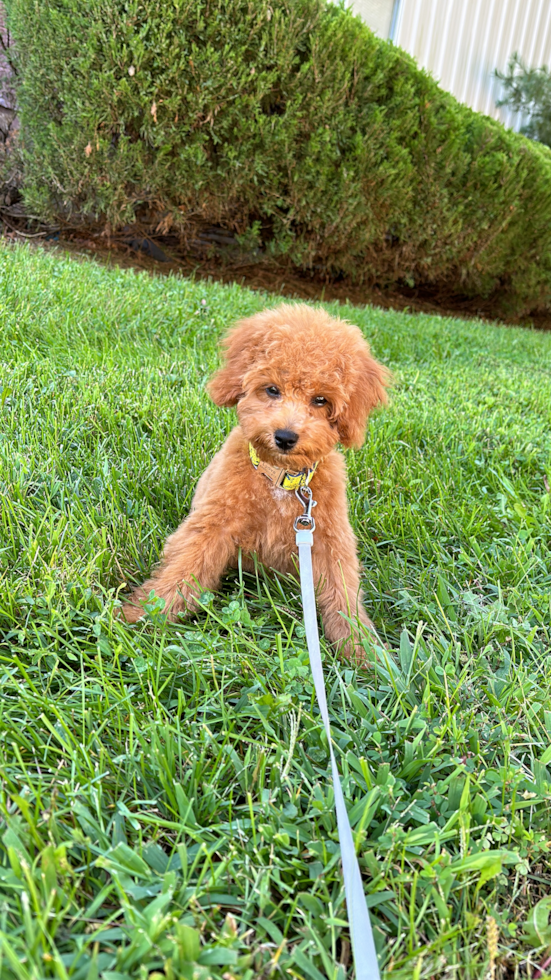
Premier Pups Customer Photo of a curly-haired Poodle
Poodles are well-known for their dense, curly coats, which shed minimally and trap dander. This coat type is one of the reasons Poodles are often considered hypoallergenic and why so many people with allergies choose them. Poodles' hypoallergenic reputation makes them a prime candidate for creating hypoallergenic crossbreeds like the Maltipoo.
RELATED: The Forever Young and Sweet Maltipoo
What Makes a Dog Hypoallergenic?
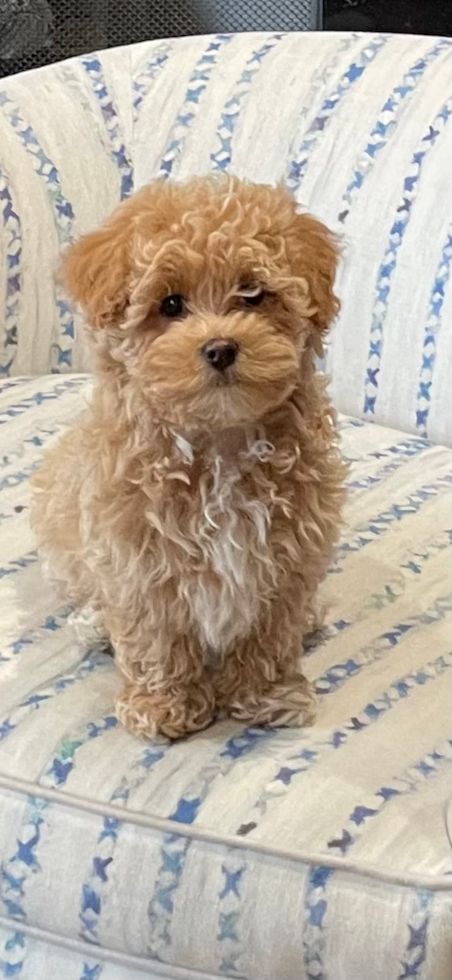
Premier Pups Customer Photo of a gorgeous, curly-haired Maltipoo
When we talk about hypoallergenic dogs, it's important to understand what contributes to this quality. Hypoallergenic dogs are breeds that tend to produce fewer allergens than others. The primary allergens come from a dog's dander (dead skin cells), saliva, and urine. Here are the main factors that make a dog hypoallergenic:
Fur vs. Hair: The Key Differences
One of the most significant factors is whether a dog has fur or hair. Fur typically sheds more frequently, spreading dander and allergens around the home. Hair, on the other hand, grows continuously and sheds less, resulting in fewer allergens being released into the environment. Maltipoos, depending on their genetic makeup, can have either type, though they often inherit hair-like coats from their Poodle parent.
Dander Production
Dander is microscopic and can easily become airborne, leading to allergic reactions. Dogs that shed less tend to produce less dander that is spread throughout the home. Both Maltese and Poodles are known for lower dander production, which is a trait that is usually passed down to Maltipoos.
Saliva and Urine
Although less common, some people are allergic to proteins found in a dog's saliva and urine. Since all dogs produce saliva and urine, managing exposure to these allergens involves regular cleaning and care. However, since Maltipoos are small, their overall production of these allergens is lower compared to larger breeds.
RELATED: Grooming Your Dog at Home Guide
Maltipoo Hair Types
Maltipoos can inherit a variety of hair types from their Maltese and Poodle parents, which play a significant role in their hypoallergenic qualities. The three primary hair types seen in Maltipoos are curly, wavy, and straight, each affecting allergen levels differently.
Curly Hair Maltipoos
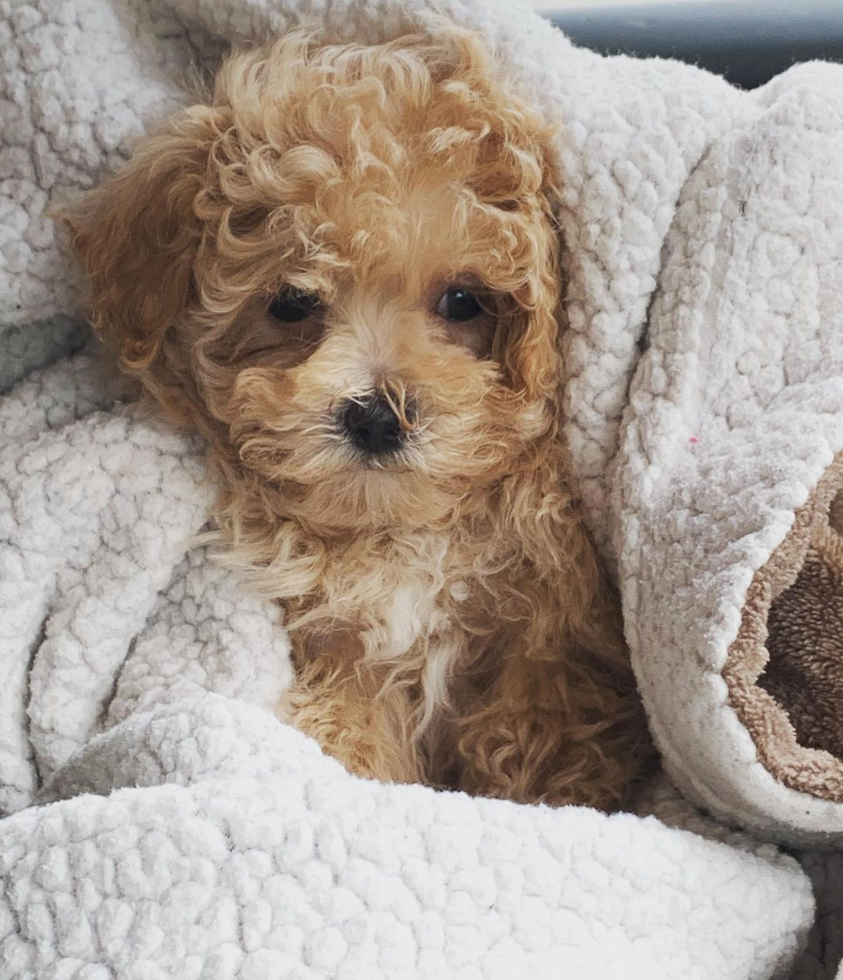
Premier Pups Customer Photo of a curly-haired Maltipoo puppy
Curly-haired Maltipoos typically inherit their coat from the Poodle side of the family. This type of hair is tightly coiled and sheds very little, which helps trap dander and reduce the spread of allergens. Curly coats are generally considered the most hypoallergenic.
Wavy Hair Maltipoos
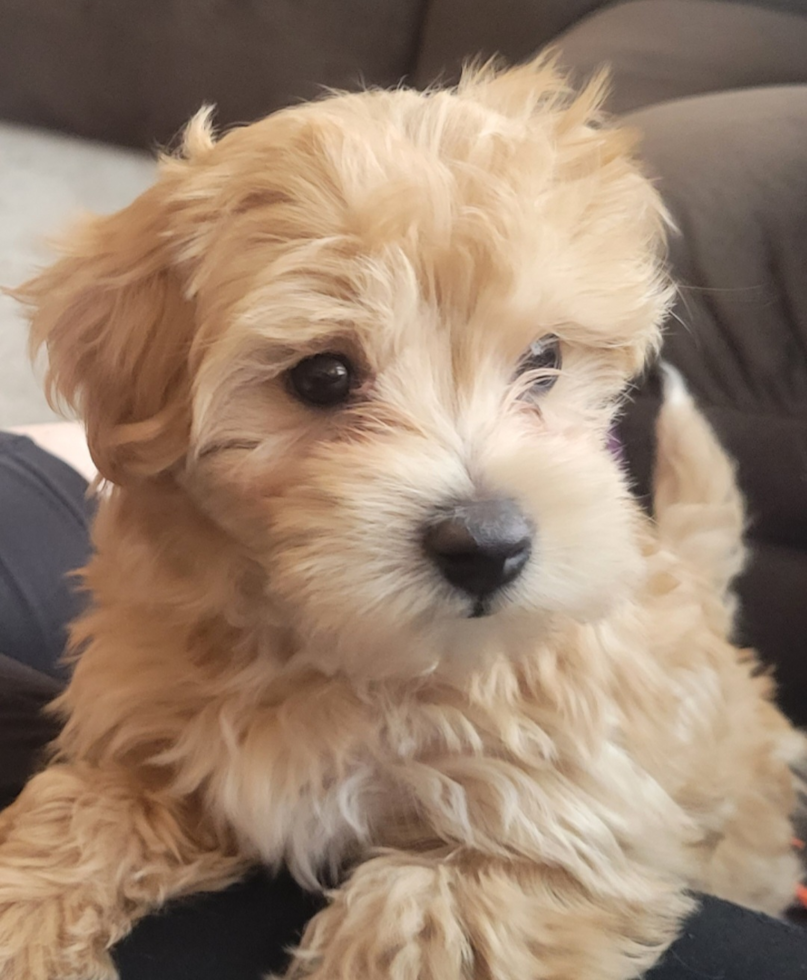
Premier Pups Customer Photo of a wavy-haired Maltipoo
Wavy-haired Maltipoos have a combination of both Poodle and Maltese coat characteristics. This hair type sheds a tad more than curly hair but still significantly less than many other breeds. Wavy-haired Maltipoos can be moderately hypoallergenic, depending on the density and tightness of the waves.
Straight Hair Maltipoos
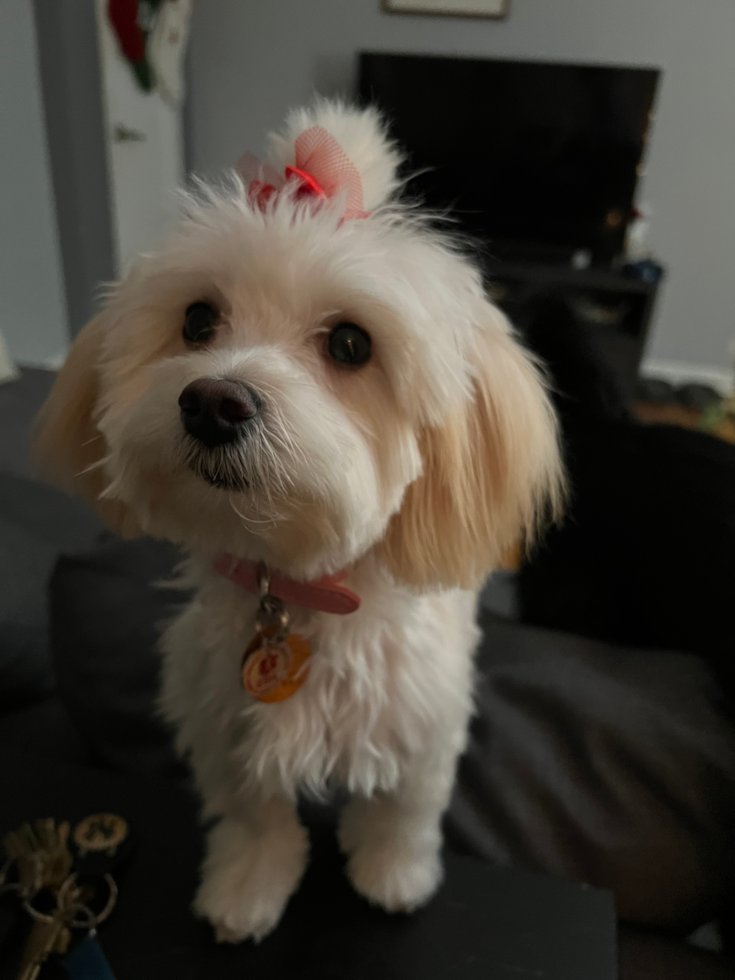
Premier Pups Customer Photo of a straight-haired Maltipoo
Straight-haired Maltipoos resemble the coat of the Maltese more closely. This type of hair can shed just a tad more than curly or wavy types, leading to higher allergen levels. While still potentially hypoallergenic, straight-haired Maltipoos may require more grooming to manage dander effectively.
Impact of Hair Type on Allergies
The hypoallergenic potential of a Maltipoo largely depends on the type of hair they inherit. Curly-haired Maltipoos are the most likely to be suitable for allergy sufferers, while wavy and straight-haired Maltipoos might need more attention to grooming and maintenance to minimize allergens.
RELATED: Explore Maltipoo Pictures
Maltipoo Generations and Allergy Potential
The generation of a Maltipoo, defined by its genetic lineage, significantly influences its hypoallergenic properties. Understanding the differences between F1, F1B, and multigenerational Maltipoos can help potential owners make an informed decision about which type of Maltipoo is best for their allergy levels.
F1 Maltipoos
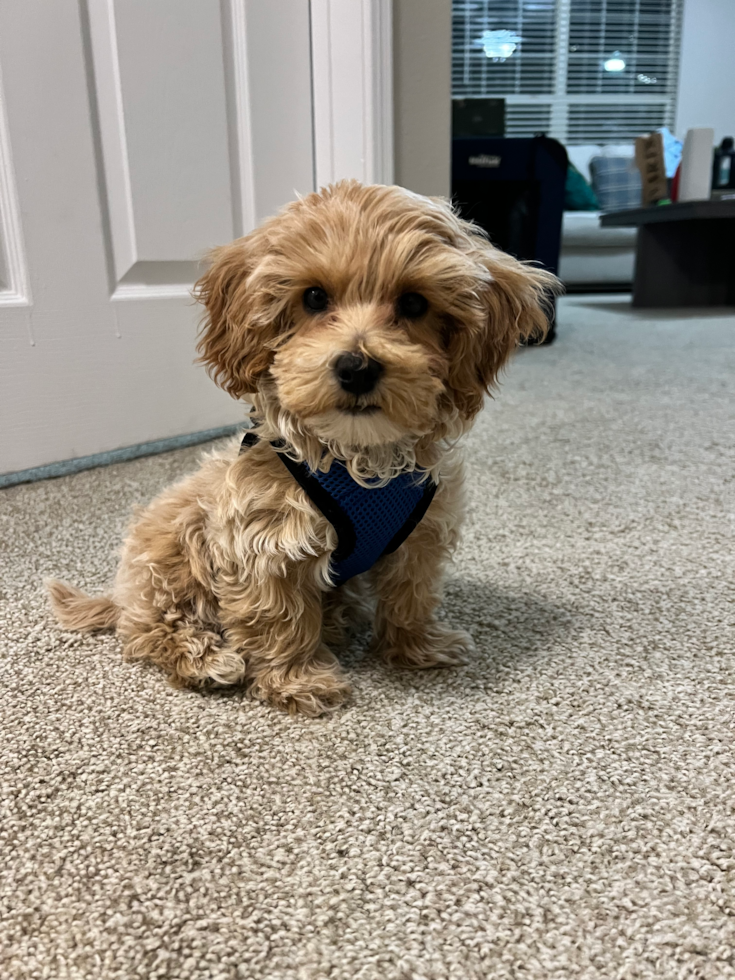
Premier Pups Customer Photo of an F1 Maltipoo
F1 Maltipoos are first-generation crosses, with one Maltese parent and one Poodle parent. They typically inherit a mix of traits from both breeds. This generation can vary widely in coat type, with some being more hypoallergenic than others, depending on the specific combination of inherited traits.
F1B Maltipoos

Premier Pups Customer Photo of an F1b Maltipoo
F1B Maltipoos result from breeding an F1 Maltipoo back with a Poodle. This increases the likelihood of Poodle-like traits, including a curly, low-shedding coat. F1B Maltipoos are often more hypoallergenic than F1s due to the higher percentage of Poodle genetics, which enhances their hypoallergenic qualities.
Multigenerational Maltipoos
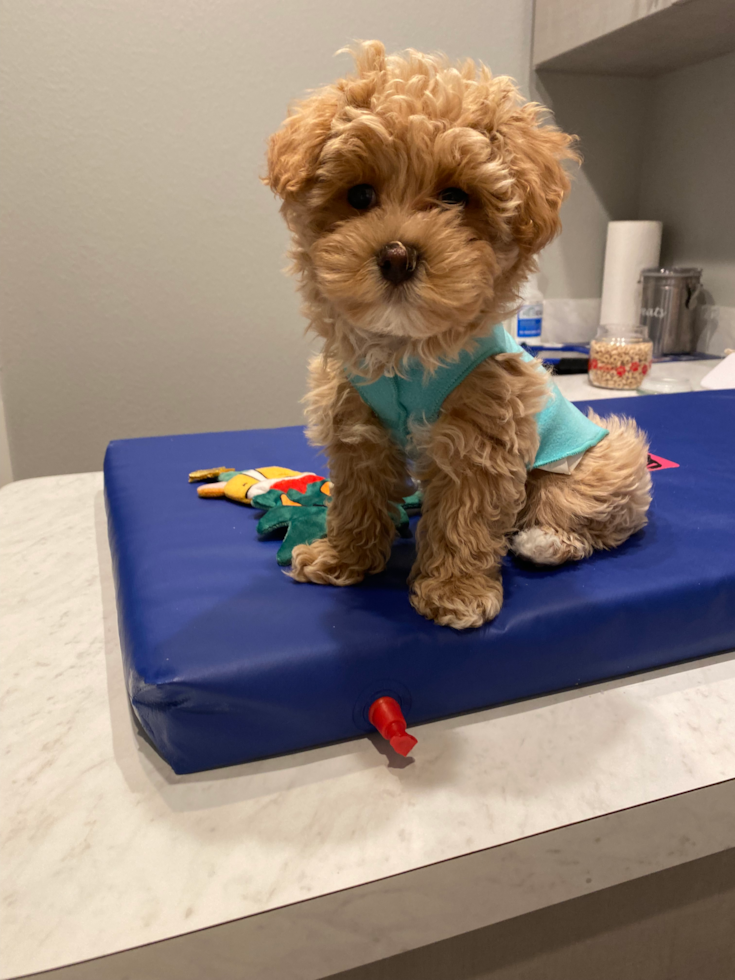
Premier Pups Customer Photo of a multigen Maltipoo
Multigenerational Maltipoos are produced from two Maltipoos, often selected to enhance desirable traits such as hypoallergenic coats. Breeders focus on maintaining or improving the low-shedding, dander-trapping characteristics. These Maltipoos are typically the most predictable in terms of hypoallergenic qualities.
Why Generations Matter
Each generation's genetic makeup affects the consistency of hypoallergenic traits. F1B and multigenerational Maltipoos generally have more reliable hypoallergenic properties, making them a better choice for allergy sufferers.
RELATED: Explore Maltipoo Puppies
Living with a Maltipoo: Managing Allergies
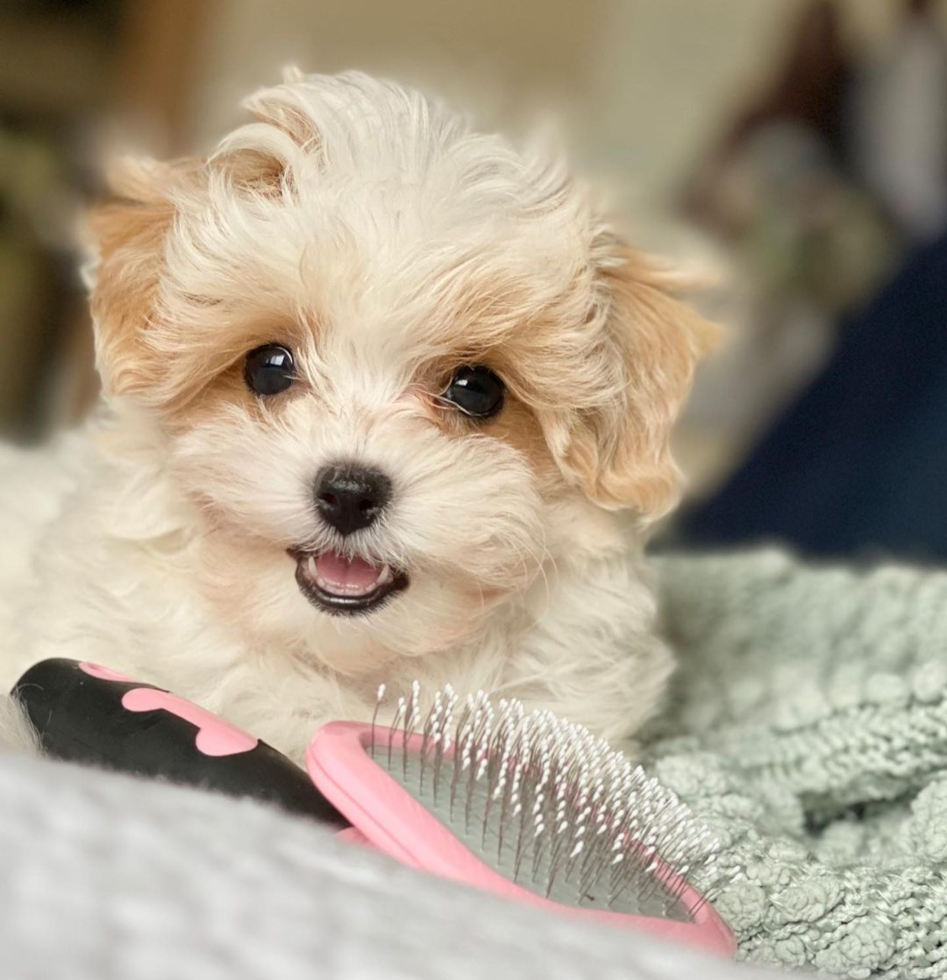
Premier Pups Customer Photo of an adorable Maltipoo dog
Living with a Maltipoo requires proactive steps to manage allergens and ensure a comfortable environment for allergy sufferers. Proper care and household management can significantly reduce the impact of dog-related allergens.
Keeping Your Home Allergen-Free
Maintaining a clean home is crucial in managing allergies. Regular vacuuming, dusting, and washing of bedding can help reduce the presence of dander. Opt for a vacuum with a HEPA filter, which is designed to trap small particles, including pet dander.
Air Purifiers and Cleaning Tips
Using air purifiers with HEPA filters in common areas can significantly improve air quality by capturing airborne allergens. Regularly clean your Maltipoo's bedding, toys, and favorite lounging spots to keep dander accumulation to a minimum. Ensure that your home has good ventilation to help disperse any allergens.
Health and Diet Considerations
A healthy diet contributes to the overall well-being of your Maltipoo and can impact their skin and coat health. Feeding high-quality food rich in essential fatty acids can promote a healthy coat, reducing shedding and dander production. Omega-3 and omega-6 fatty acids are particularly beneficial in maintaining a shiny, healthy coat and minimizing skin issues that can lead to increased dander.
Healthy Skin and Coat
To support a healthy coat, consider dietary supplements like fish oil, which can help reduce inflammation and improve skin health. Healthy skin sheds less dander, thereby reducing the potential for allergic reactions. Additionally, providing ample hydration and using skin-friendly grooming products can further enhance coat quality.
RELATED: Pros and Cons of Owning a Maltipoo
Common Misconceptions About Hypoallergenic Dogs

Premier Pups Customer Photo of a curly-coated Maltipoo
Understanding the realities of hypoallergenic dogs is important. There are several misconceptions about what it means for a dog to be hypoallergenic, and clarifying these can help set realistic expectations.
No Dog is 100% Hypoallergenic
One of the most common misconceptions is that hypoallergenic dogs are completely allergen-free. In reality, no breed is entirely hypoallergenic. Even breeds that produce fewer allergens can still cause reactions in sensitive individuals. The goal is to find a breed, like the Maltipoo, that produces fewer allergens.
Saliva and Dander Myths
Many people believe that allergens only come from a dog's fur, but allergens are also present in a dog's saliva and dander. This means that even hairless dogs can cause allergic reactions. Managing these allergens requires regular cleaning and grooming, regardless of the breed.
Hypoallergenic Does Not Mean Low Maintenance
Another misconception is that hypoallergenic dogs require less maintenance. In fact, breeds like Maltipoos often need regular grooming to maintain their coat and minimize allergens. Proper grooming routines are essential to keep allergen levels low and ensure the dog’s coat and skin remain healthy.
Hypoallergenic Dogs and Allergy Severity
The severity of allergies can vary greatly from person to person. While one person might have minimal reactions to a Maltipoo, another might still experience symptoms. Spending time with a dog before making a decision can help potential owners gauge their own allergic responses.
Conclusion
While no dog is completely hypoallergenic, the Maltipoo’s low-shedding coat and lower dander production make these dogs a great choice for owners who suffer from pet-related allergies.
Scroll down to see FAQs about hypoallergenic Maltipoos.
What To Read Next
Do Maltipoos Shed?
Everything You Need to Know About Brown Maltipoos
Frequently Asked Questions
Are Maltipoos hypoallergenic? Yes, Maltipoos are often considered hypoallergenic due to their low-shedding coats, which reduce the amount of dander released into the environment. However, individual reactions can vary.
What affects a Maltipoo's hypoallergenic qualities? The main factors include the type of coat (curly, wavy, or straight), the generation (F1, F1B, or multigenerational), and regular grooming practices to minimize allergens.
Do Maltipoos shed a lot? Maltipoos generally shed very little, especially those with curly or wavy coats. Regular grooming can further reduce shedding and dander.
Can someone with severe allergies live with a Maltipoo? It depends on the individual’s sensitivity. Spending time with a Maltipoo before committing can help determine if they trigger allergic reactions.
How often should I groom my Maltipoo to keep allergens low? Brushing your Maltipoo several times a week and bathing them monthly with hypoallergenic shampoo can help keep allergen levels low. Professional grooming every 6-8 weeks is also recommended.
Are certain Maltipoo generations more hypoallergenic than others? Yes, F1B and multigenerational Maltipoos are typically more hypoallergenic due to a higher percentage of Poodle genetics, which enhances their low-shedding and dander-trapping qualities.




